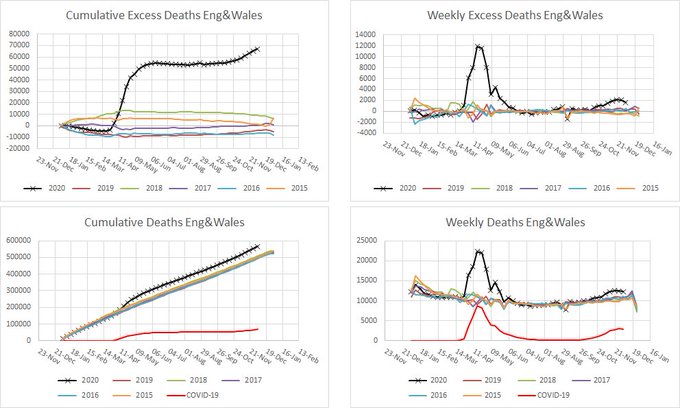A straight line on a semilog plot is a "(relatively) simple and interpretable description of the data" which makes physical sense, because epidemics grow exponentially (at least, at the beginning, with no measures to reduce transmission). This is because the number of people getting newly infected is proportional to the number of people already infected (i.e. the rate of change of the value is proportional to the value). The gradient of that line will give you the exponential time constant, from which you can get the doubling (or halving) time if you prefer.KAJ wrote: Wed Dec 16, 2020 9:34 pmI'm not looking for a line which makes physical sense. I'm just looking for a (relatively) simple and interpretable description of the data.shpalman wrote: Wed Dec 16, 2020 9:14 pm To get a line which makes physical sense you need a model of the underlying physical process.
All you can do when you make the line not-straight is look at how the gradient of it changes. The gradient over any short-enough period that it looks sort of straight will give you the exponential time constant at that moment, and of course you can see if it's exponential growth or decay by whether it's going up or down.
If you need to make a second-order (quadratic) fit to the log of the data (in the sense that either a linear fit no longer fits, or a quadratic fit unambiguously gives a non-zero coefficient for the quadratic term) then you can also see analytically how the gradient of the line is changing with time and when the peak was. As if you couldn't see it just by looking.
As you go to higher and higher orders of fit, bear in mind that the polynomials are a complete set so you could describe literally any function with them.
The usual physical model of an epidemic is the SIR, but that peaks when infection has reached a substantial fraction of the whole population, and that's not what's happening here. Also, you'd need to model that people are exposed before they become infectious, and that known infected people are quarantined, but there are lots of unknown infectious people. James Annan's model tries to take into account the fraction of infections which are actually detected, for example. But then - what? You'd be able to predict a little bit into the future assuming the lockdown rules aren't changed and/or people don't change their behaviour.
